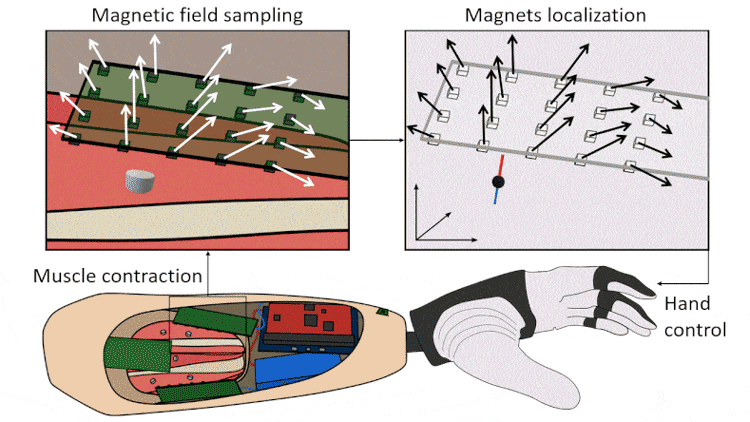Magnetic tracking involves the use of magnetic field sensors to retrieve the position and orientation of one or multiple magnetic markers. It has been widely investigated in different fields to track the movement of objects when a free line of sight is not available, e.g., to track surgical tools during intra-body procedures. In this context, we proposed a novel interface for hand prostheses, named myokinetic control interface, in which magnets are implanted in the residual limb muscles to monitor their contractions and send appropriate commands to the artificial hand.
Within this concept, the interface requires a transcutaneous magnet localizer that can seamlessly integrate into a self-contained limb prosthesis—a feature yet to be realized in the current state of the art. In an attempt to bridge this gap, we have developed a modular embedded system comprising a computation unit capable of acquiring synchronized samples from up to eight acquisition units, each hosting 20 magnetic field sensors. Such a system enables the real-time localization of multiple magnets, thereby allowing to selectively track the movement of multiple targeted muscles in parallel.
The system exhibits short computation times and power consumption suitable for use in wearable devices such as prosthetic arms. It proved able to localize up to eight magnets while moving at speeds in the range of physiological movements, with high accuracy (<1mm) and precision (<0.5mm). Overall, the proposed system meets all the requirements needed for the implementation of a self-contained myokinetic prosthetic hand and paves the way for its clinical implementation, potentially restoring intuitive and parallel control over multiple degrees-of-freedom of an artificial hand.

